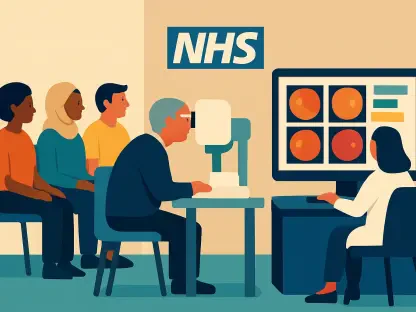The realm of medical research often struggles with disentangling the intricate gene networks that underpin complex diseases, such as diabetes, cancer, and asthma. Single-gene disorders, such as cystic fibrosis or sickle cell anemia, can be traced to specific genetic mutations. However, the scenario changes drastically in multi-gene diseases, where the interplay of numerous genes creates a staggering number of possibilities and challenges. This is akin to the layers of failure that lead to an airplane crash—multiple systems must simultaneously break down. This complex interaction echoes in human genetics, where identifying specific gene combinations responsible for diseases becomes a Herculean task. To address this complexity, researchers at Northwestern University have introduced a novel computational tool, the Transcriptome-Wide conditional Variational auto-Encoder (TWAVE). This AI model is designed to map out gene interactions systematically, representing a significant leap forward from standard genome-wide association studies, which struggle to capture the collective behavior of gene clusters.
Exploring Gene Interactions
Groundbreaking advances in computational models have revolutionized how researchers understand complex diseases linked to genetic networks. TWAVE exemplifies this shift, using a generative AI approach to amplify limited gene expression datasets. These datasets provide snapshots of how genes are activated or suppressed, offering insights into biological activities. Unlike studies focusing solely on genome sequences, TWAVE highlights the dynamic nature of gene expression, where environmental factors influence genetic activity. This fresh perspective prioritizes the collective impact of gene networks over single-gene effects, revealing patterns that may go unnoticed otherwise. TWAVE’s methodology signifies a transformational departure, emphasizing multigenic interactions and showcasing the complexity embedded in human biology. Early research results affirm its effectiveness, with TWAVE successfully identifying disease-associated genes previously overlooked by conventional techniques. This innovative tool opens doors to personalized medicine, paving the way for treatments tailored to an individual’s unique genetic and environmental makeup.
Real Implications in Medical Research
TWAVE’s approach to analyzing gene expression illustrates a broader trend in biomedical research: embracing the interconnected nature of genetic factors. By accounting for how genes behave in various environments, researchers gain a holistic view of disease etiology. TWAVE’s ability to pinpoint causal genes sheds light on diseases manifesting differently across individuals. This accuracy is crucial for developing tailored treatment strategies that address specific genetic and environmental contexts. Such developments transform standard practices in medical research by shifting focus towards understanding gene expression and interactions within networks. TWAVE’s success across various diseases exemplifies its potential; it identifies different gene sets contributing to the same disease depending on the individual. Consequently, the paradigm shifts towards personalized approaches, acknowledging the diverse genetic backgrounds contributing to a single disorder. The tool advances knowledge in genetic research, allowing scientists to delve deeper into complex traits and unravel the intricacies of gene interdependencies.
The Future of Personalized Medicine
TWAVE not only enhances the identification of disease-causing gene combinations but also supports the advancement of personalized medicine. Through detailed analysis of gene expression patterns, scientists can develop more precise treatment plans by targeting multiple genes simultaneously. This methodology addresses diseases rooted in varied genetic and environmental factors across individuals. Moreover, TWAVE strengthens the argument that understanding genetic interactions is pivotal in predicting traits and health outcomes. The Human Genome Project has spotlighted the multigenic nature of human genes and proposed that the complexity of human life is not dictated merely by the number of genes but by their interactions. TWAVE builds on this foundation, providing a sophisticated model to analyze how genes collectively shape diseases. Supported by major institutions, including the National Cancer Institute, TWAVE’s potential to redefine medical research is evident. The tool embodies the commitment to evolving research toward personalized medicine and validates the importance of collaborative efforts in complex disease studies.
Transformative Impacts and Future Directions
Medical research often grapples with unraveling the complex gene networks defining diseases like diabetes, cancer, and asthma. While single-gene disorders, such as cystic fibrosis or sickle cell anemia, can be traced to specific genetic mutations, multi-gene diseases pose significantly greater challenges. These disorders result from interactions among numerous genes, creating myriad possibilities, similar to multiple system breakdowns in an airplane crash. Thus, identifying gene combinations responsible for diseases is incredibly difficult. To tackle this, Northwestern University researchers developed the Transcriptome-Wide conditional Variational auto-Encoder (TWAVE). This innovative AI tool systematically maps gene interactions, marking a major advancement compared to standard genome-wide association studies, which often fail to capture gene clusters’ collective behavior. By leveraging TWAVE, scientists aim to uncover the complex interactions between genes, paving the way for breakthroughs in treating multi-gene diseases.









